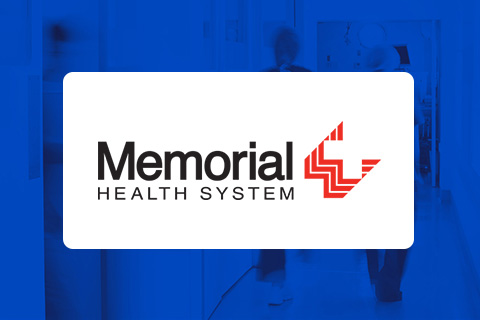Understanding discrete event simulation
Discrete event simulation is a method of modeling the operation of a system as a sequence of events in time. It’s commonly used to analyze workflows, reduce bottlenecks, and test process improvements without risk. Think about the running of a factory assembly line, the staff assignment of a hospital or call center, or the day-to-day operation of a bank.

What is discrete event simulation?
Discrete event simulation is a powerful technique for optimizing processes and making confident, impactful decisions.
Using intuitive discrete event simulation software like Simul8, you can build a visual mock-up of your process, similar to creating a flowchart. By adding timings and rules around the tasks, resources and constraints that make up your system, the simulation can accurately represent your real process.
Simulation offers a powerful, evidence-based approach to decision making - by using a virtual representation to test the impact of process changes and 'what-if' scenarios, you can find an approach that delivers the best results.
What are the benefits of discrete event simulation?
DES is an ideal method for event-driven process modeling in dynamic environments like manufacturing and service industries.

Time-based
Discrete event simulation is time based, and takes into account all the resources and constraints involved, as well as the way these things interact with each other as time passes.
This enables you to rapidly evaluate the long-term consequences of any changes and decisions you make.

Matches reality
It doesn't always take exactly 5 minutes for a customer to be served and a customer doesn't always arrive every 15 minutes.
Simulation builds in the randomness you would see in real life. So when you make changes to the simulation you see exactly how the system would behave in real life.

Effective testing
With discrete event simulation software you can quickly try out your ideas at a fraction of the cost of trying them in the real world.
And, because you can try ideas quickly, you can have many more ideas, and gain many more insights, into how to run your organization more effectively.
What can be simulated?
There are many scenarios that can be simulated. As a general rule, any system that involves a process flow with events can be simulated – so any process you can draw a flowchart of, you can simulate.
The processes you'll gain most benefit from simulating are those that involve change over time, variability and randomness.
For example, at a gas station nobody can guess exactly which time the next car will arrive, whether that customer will decide to purchase gas only, or how long they’ll take to make a purchase. Modeling complex dynamic systems like this effectively by any other method isn't possible.
You can simulate manufacturing systems, healthcare operations, call centers, large-scale supply chains and much more.
How discrete event simulation works

If you’re wondering how to build a discrete event simulation model, the process typically starts with identifying entities, events, and system logic.
- Define the entities (e.g., people, products, patients).
- Specify the process flow using logic and rules.
- Assign resources and constraints.
- Run the simulation to mimic the flow of events over time.
- Analyze the output to find bottlenecks and optimize performance.
Why use discrete event simulation?
There are many process improvements you can make using discrete event simulation software. For example, higher quality and efficiency from capital assets, better management of inventory, higher return on assets. But some of these improvements could be made without simulation.
So the real question is 'Why use simulation instead of another method?'
Discrete Event Simulation vs. Real Life Experimentation

Cost
Experimenting in the real world is costly. It is not only the capital expenditure of hiring new staff or purchasing new equipment it is the cost of the ramifications of these decisions.
What if you fire 3 staff and then find you can't cope with the workload and you lose customers? The only cost with simulation is the software and the man hours to build the simulation. Many of our customers have seen ROI of millions of dollars.

Repeatability
In real life it is really difficult to repeat the exact circumstances again so you only get 1 chance to collect the results and you can't test different ideas under the exact same circumstances.
So how do you know which idea is really the best. With simulation software you can test the same system again and again with different inputs.

Time
If you want to know whether hiring another 3 doctors will reduce patient waiting lists over the next 2 years you'll actually have to wait 2 years.
With simulation you can run 2, 10 or even 100 years into the future in seconds. So you get the answer now instead of when it is too late to do anything about it.
Discrete Event Simulation vs. Other Techniques

Interaction of random events
Some other mathematical tools can manage to effectively model a steady state scenario but only simulation lets you build in random occurrences like a machine breaking down and see the effects of this further down the line.
The more complex the scenario is the more these tools fall down and simulation software is the only answer.

Non standard distributions
Most other techniques force you to describe a situation approximately, "it takes an average of 5 minutes to serve each customer". In real life this isn't the case. It takes 3 minutes to serve the customer if they have 4 items, it takes 7 minutes if they have 20 items.
Approximating means results like staff utilization time and customer waiting times are all inaccurate. Only simulation gives you the flexibility to describe events and timings as they actually are in real life.

Makes you think
Simulation gets you thinking about all aspects of a process. The rule and data collection forces you to consider why elements work in a certain way, if they could work better. It brings to the surface inconsistencies and inefficiencies especially between different parts of a process who work independently.
Sometimes the simulation doesn't even have to be finished, the thinking it's made you do reveals the solution.

Communication
Simulation software is visual and animated, it lets you clearly describe your proposal to others. It's more convincing than just displaying the end results as people can't see where these came from.
Simulation is so effective at communicating ideas that many companies now use it as a sales tool to sell their products.
Real-world examples of discrete event simulation

Meeting increased demand without additional costs
Fiat Chrysler improved manufacturing throughput by 39 units and increased revenue by $1,000,000 per day at its Brampton plant.

Ensuring the feasibility of investment and expansion
Memorial Health System improved patient waiting times and ensured the feasibility of a $31 million capital investment project.

Optimizing staffing to reduce customer wait times
Virginia DMV identified a staffing model to reduce customer waiting times to 20 minutes or less across 74 customer service centres.
Frequently Asked Questions
Discrete event simulation is used to model, analyze, and improve systems involving queues, resources, and time-based processes. It is commonly applied in industries like manufacturing, logistics, and healthcare.
DES works by simulating a sequence of time-based events that cause changes in a system. These events trigger transitions in system state-such as starting a process, moving a resource, or completing a task - allowing you to observe how the system behaves over time.
DES enables organizations to test scenarios safely, identify inefficiencies, optimize operations, and make data-driven decisions - all without disrupting real-world systems.
DES focuses on modeling system changes driven by events over time, ideal for process-centric operations. Agent-based modeling simulates autonomous agents and their behaviors, better for modeling interactions between individuals or entities.
While the concepts may be complex, modern simulation software often provides drag-and-drop tools, visual modeling, and tutorials that make learning discrete event simulation more accessible to beginners.
In manufacturing, discrete event simulation is used to model production lines, optimize machine utilization, minimize bottlenecks, and test scheduling strategies. It helps manufacturers make data-driven decisions about layout changes, automation, and resource allocation - without interrupting real operations.
A common business process simulation example in healthcare can be simulating patient flows in emergency departments, optimize operating room scheduling, or model the impact of staffing changes, helping improve patient outcomes and reduce wait times.
Yes, DES is widely used to model supply chains. You can simulate logistics networks, warehouse operations, production schedules, and delivery systems to find efficiencies and reduce costs.
Learn more about Simul8
Explore the wealth of features that make Simul8 the #1 choice for simulation.
Learn more
